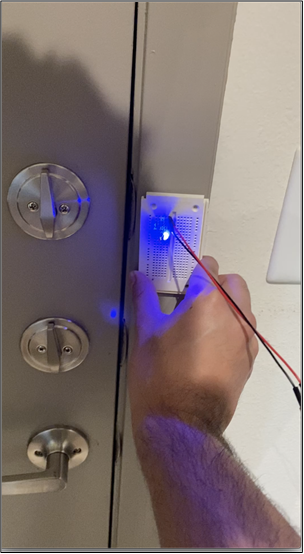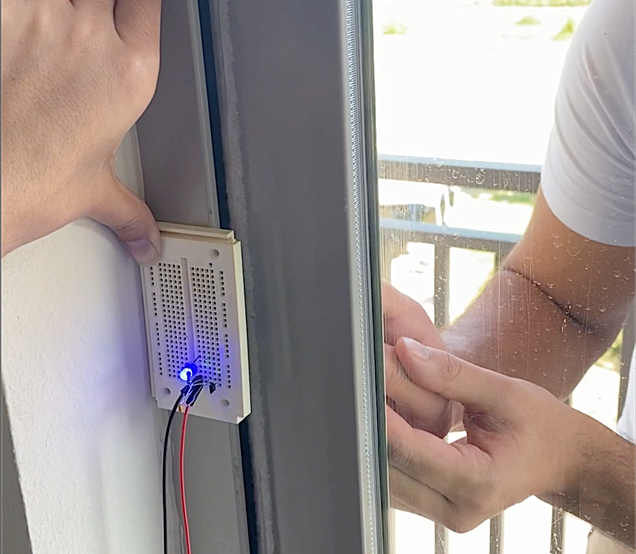SBAA510 October 2021 DRV5032 , TMAG5170 , TMAG5231 , TMAG5273
5.6 Tamper Susceptibility Testing Setup
For this test, a sliding glass door and a typical entry door is used as the main mounting point for the Reed switch and the DRV5032 tamper test. The device mounting is altered in a way to make testing more practical while imitating a typical placement for the device in a home or business. For each test, the magnet is brought closer to the door for the opposite (outside) side until the LED goes off, indicating that the sensor has detected the tamper magnet’s field. Both door scenarios are shown in Figure 5-10.
 |  |